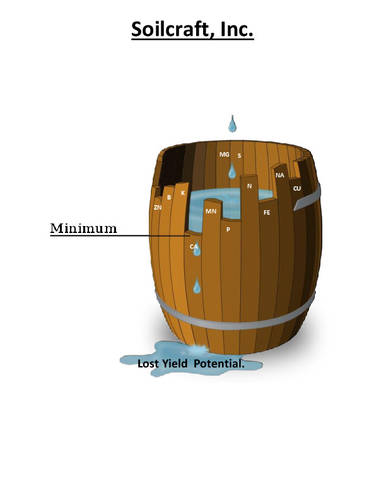Liebig’s law of the minimum The concept first stated by J. von Liebig in 1840, that the rate of growth of a plant, the size to which it grows, and its overall health depend on the amount of the scarcest of its essential nutrients that is available to it.
This concept was originally applied to plant or crop growth, where it was found that increasing the amount of plentiful nutrients did not increase plant growth. Only by increasing the amount of the limiting nutrient (the one most scarce in relation to “need”) was the growth of a plant or crop improved.
This principle can be summed up in the aphorism, “The availability of the most abundant nutrient in the soil is only as good as the availability of the least abundant nutrient in the soil.” Or, to put it more plainly, “A chain is only as strong as its weakest link.”
Just as the capacity of a barrel with staves of unequal length is limited by the shortest stave, so a plant’s growth is limited by the nutrient in shortest supply.
This concept is now broadened into a general model of limiting factors for all organisms, including the limiting effects of excesses of chemical nutrients and other environmental factors.
